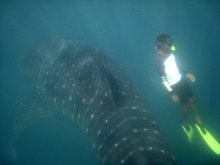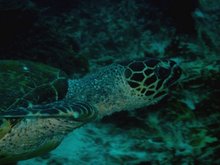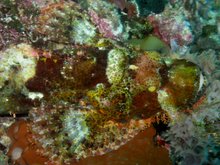Thursday, 21 February 2008
Tuesday, 12 February 2008
Use of Shark products in cosmetics
Quotation from Oceana
“Oceana is satisfied to see that some of the biggest names in the cosmetics industry are recognizing their corporate social responsibilities and choosing not to contribute to the extinction of these important animals,” said Rebecca Greenberg, a marine scientist with Oceana and coordinator of the shark campaign. “We encourage people to become educated and responsible consumers by asking cosmetic retailers about squalene sources and directing their purchases towards companies that have never used this animal-based product in cosmetics or that have made the decision to replace it.”
Actually I was completely ignorant of this use. But not anymore.
Full article can be found here.
http://www.oceana.org/europe/media/press-releases/press_release/0/746/
Tuesday, 23 October 2007
Hoi Ha Wan - A marine park in Hong Kong
Under Hong Kong legislation marine parks are protected to some degree,the following picture, taken in Hoi Ha, indicates the activities not allowed :

The key points are that fishing is still permitted in the Marine Parks, to licensed fishermen and that the park is not adequately policed. On a visit during the weekend of the 20th October 2007, I found the following character right on the beach under Hoi Ha Wan village and a stones throw from the AFCD office.

Unfortunately at the time I took this photo I could not tell that he had a seastar in his hand, otherwise I might have spoken to him, as he walked away I could see that he had a nine inch long divers knife, strapped to his leg. One can only guess what he was looking for, however what ever is it he should not be doing it..
There is a growing disquiet in Hong Kong about inadequate protection of marine life AND about the lack of knowledge about the issues. All things marine are seen as inexhaustible.
Wednesday, 10 October 2007
Apo reef - fishing banned
Apo Reef (note: not the similarly named Apo Island, a marine reserve off Negros Island in the Southern Philippines) located off the west coast of Mindoro in the Philippines is trying to relive "old glories" and has put into place a total ban from 2nd October on "all extractive activities such as fishing, collection and harvesting of any life form"
Full article, courtesy of WWF-Philippines can be found HERE
One of the key problems with setting up these kinds of No-Take reserves is resistance from the local fishing community, to overcome this alternative sources for fishing have been developed, through installation of overshore fish aggregation devices. A local solution to the local situation, resistance will persist, but hopefully with increased fish aggregations and increased tourism, the project will be successful.
A worthwhile project to support and I hope to visit sometime soon.
Thursday, 24 May 2007
Indonesia protects 900,000 hectares through network of Marine Protected Areas
Through the setting up of seven separate Marine Protected Areas (MPA's). A vast 900,000 hectares of tropical water are newly protected in the Indonesian archipelago of Raja Ampat. Raja Ampat is in the far east of Indonesia, bordering the Island of West Papua and is well know as Marine Biodiversity Hotspot. Click HERE for an overall map of the area.
This announcement by the Indonesian Minister of Marine Affairs and Fisheries Mr. Freddy Numberi, was as a result of efforts and campaigning of the local Fishing Communities and NGO's organisations such as Conservation International.
What has been happening in the recent past is that because of encroachment by non local commercial fishing boats in the area the local fishing communities have been suffering increasingly from reduced catches, threatening local livelihoods. Local communities will be jointly managing the MPA's.
The area can be visited and there are a number of liveaboard operators in the area (For example, MV Bidadari, who I dived with recently in Komodo, has a sister ship Sevens Seas, that operates in the area)
Full report from Conservation International, can be found Click HERE
Saturday, 28 April 2007
Komodo National Park - mooring buoy project
The Indonesian and Philippines archipelagos are the epicentre of the worlds marine biodiversity (exact location subject to some debate, try to google 'marine biodiversity epicentre' for some intriguing differences of opinions) Komodo is certainly a magical place, great diving, huge variety of things to see underwater and fantastic scenery above sea level. To add to this is the unique terrestrial ecology of Komodo and Rinca islands.
With the recent increase in dive boats operating in the Park, an extensive mooring buoy project was initiated by Helen Newman. This project had the active involvement of the diving community in Komodo and was completed in February 2007. Coincidently this was when I was diving in the Park on the live aboard dive boat, MV Bidadari. We were the first boat to utilise a few of the new buoys.

Ouch, the potential damage to reefs is
obvious
This is the kind of project that will make a real difference and is one piece that will help to ensure the survival of this unique marine reserve. Other challenges still exist, but that is another story.....
The full final report on the mooring buoy project can be read by clicking here
Are there any other worthwhile projects out there that should be mentioned?









